Wine borders on obsession for some, while others call it research. Some drink it, while others burn it. Creative solutions are turning wine and its waste into algae, pharmaceutical products, and electricity.
We drink it, we use it in rituals and celebrations, we went to war with it: wine is life. Wine is also the subject of scientific research. When sitting back after a long day’s work, sipping a pleasant wine, you probably do not think about how the wine was made, what acidity was modified to make it taste fresher, what processes softened the tannins; but oenologists, wine scientists, do. They have manipulated that relaxing glass of crisp white or full-bodied red that you have just drunk into an art form and science.
Wine connects everything. The beauty of wine production is that it is much more than just the wine itself. Wine is linked to archaeology, making algae, food, biomass for energy production, heating or cooling, making ethanol for biodiesel, and lots of other possibilities dependent on people’s creativity. Wine also needs to be researched, but before that let us start from the beginning.
Wine was first made in Georgia around 6000–8000 BC. The Phoenicians introduced the Mediterranean (and Maltese Islands) to the culture of wine starting a long love affair. As traders they used to barter wine from their place of origin, the Levant, and exchange it with the Egyptians for wheat, with the English for tin, and also with other societies. Wine provided commerce even for Malta. Archaeologists from the University of Malta found that Malta was probably making commercial quantities of wine long ago. It was also important for public health; wine was deemed “safer” to water as a beverage’, said oenologist Dr Roger Aquilina—oenology is the science of wine.
“The vine is essentially an energy capture source”
After the Phoenicians, the Romans developed and spread wine-making. The Romans knew that wine could replace and preserve water. ‘Wine had a military purpose.’ And the Romans were a serious military machine. So serious that taste was not an issue. ‘They used to place wine in an amphora, seal it with clay, then leave it in the summer sun’, explained Aquilina, which destroyed the delicate flavour of wine but let them have safe drinking water on their long marches.
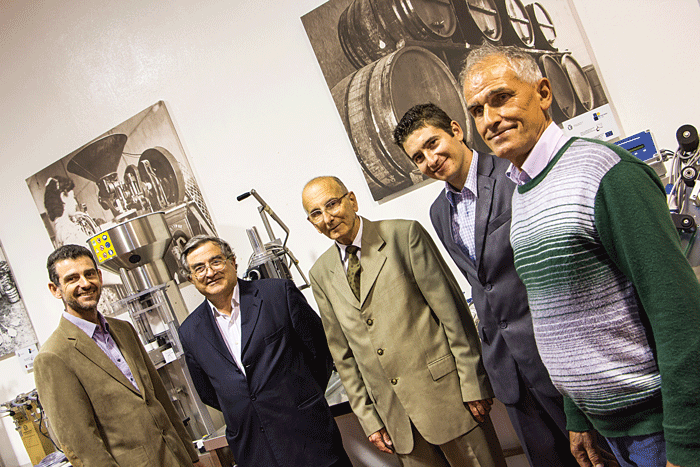
Why bother with a too-brief history of wine in the region? The links with this illustrious past are important today. Agritourism and wine routes attract millions worldwide. ‘In Italy or Spain agritourism is something fundamental for tourism. […] We could have the same thing in Malta, as long as we are prudent to create a structure around wineries’, aspires Aquilina. We can make history pay and create a better wine product in Malta.
Malta: land of vine and wine?
Malta is almost ideal to wine-making, Aquilina thinks . ‘A good wine depends on these main factors: sun, temperature, environment, water, and soil’, he explains. ‘The most important is sun. Locally, we’re good with sun, it comes at the right season.’ Cardiac surgeon and wine-lover Kevin Schembri continues ‘the ideal position is 35 degrees. We are at 33 degrees—not far. The vines should be facing South [and West]. Other [directions] will give you a nice wine as well, but that’s the maximum exposure you can get to the sun. […] The vine is essentially an energy capture source.’ So the more exposure the vines receive, the better the wine, as long as the temperature does not go too high.
‘We are in a good situation with temperature, contrary to others’ belief’, stated Aquilina. ‘The critical temperature is 35˚C. Higher temperatures for a long period of time really stress the grapevine, especially red wine. It destroys the balance between these components. […] Cold winters are also important to help the grapevine to sleep,’ and Malta ‘s winters offer sufficient guarantees. The environment the grapevine grows in bestows a certain character and flavour to the wine. For example, ‘if you have the grapevine close to the shore you will have the influence of salt spray,’ which could impart a unique taste.
“For Aquilina and Schembri, these problems are surmountable: ‘Malta has everything’”
Water and soil is where Malta starts to lose its ideal status. Malta suffers from chronic water shortage with no solution in sight. The flip-side is that too much water is also a problem. Aquilina likened the grapevine to a child that should not be spoilt and needs discipline. ‘Many think that the grapevine needs a lot of water when we feel a lot of thirst and heat. The grapevine needs water during “bud break” in late winter to early spring, when it wakes up after hibernation.’ Later on, when the fruit is growing, you need to control water amounts because if it is too comfortable it will make weak fruit.’ This makes sense against the backdrop of evolution and survival. Many animals invest more in the next generation when they are stressed but not too pressured—grapes seem no different.
Vines watered correctly can make a very good wine. Soil is a bit trickier to get around. ‘Our soils are shallow, but we have so much sun that the importance of soil is diminished.’ That is what we are gunning for in Malta. The shallow soils mean that a viticulturist needs to pay extra special care for the first few years of a vine’s life. For Aquilina and Schembri, these problems are surmountable: ‘Malta has everything’.
But what about taste? Drinking wine tends to be the most important part and research is critical here. ‘Taste is complex, […] taste is dynamic, […] a fashion,’ explained Schembri. ‘There can be mistakes [in wine production] leading to bad wine, but the variability in good wine can be enormous. So the ingredients always need to be good, then we need a cook who mixes them to make a better final product.’ You need research to train good cooks.
Wine research, or oenology, started in Malta in 1947. Aquilina explained how Malta’s desire to make good local wine increased with greater self-governance. ‘They reasoned that since we have this ideal climate to produce wine, why are we sending our money abroad when we can grow our own wine here?’ A programme in Buskett was launched in a building of the Knight’s of St. John. ‘This building still has a lot of old wine-making machinery and in the future, with funding, we hope to restore it and turn it into a small wine museum and enoteca.’
‘The next step happened in the 60s as independence was approaching. […] Another idea started coming to Malta: the concept of quality’, said Aquilina. Using FAO (Food and Agriculture Organisation) funds they started another research station after bringing a professor from Davis, California, and sending a Maltese student over to study oenology and viticulture. Unfortunately, ‘we didn’t plan a successor’. When the Maltese oenologist retired in the 1980s the place fell into ruin.
By attracting EU funds, Aquilina has finished the restoration of the research station. The first harvest has been processed with a larger one planned for next year. However, for this station to flourish it needs a postgraduate research programme through a collaboration that involves government, industry, MCAST (Malta Council for Arts Science and Technology), and the University of Malta.
But what could all of these researchers do? Aquilina would like to rediscover lost grape varieties described by Professor Borg relating to the beginning of the 20th century. Recent DNA studies from the Centro di Ricerca per la Viticolture in Italy (in collaboration with the Directorate of Agriculture and University of Malta) have already identified Girgentina and Ġellewża as two local grape varieties unique to Malta. ‘There is nothing exactly like them in the world. Like these grapes, other [unique varieties] might exist. They [Girgentina and Ġellewża] could have remained popular because they have a dual purpose, they could be eaten or used to make wine’. Aquilina thinks that this could have been critical during the Arab rule of the islands.
New wines can only be created through research. Malta cannot ‘compete on price or we will lose the war’, stated Aquilina. ‘Our pitch is that we have a product with its own identity and a certain ‘drinkability’ and aroma.’ We have to capitalise on our uniqueness. Research into wine can help Malta do so much more.
Wine Facts
- Keep your wine at a constant temperature. Temperature fluctuations can turn your Super Tuscan into salad dressing. Oxygen enters your wine bottle oxidising the alcohol, or ethanol, into ethanoic acid, or vinegar.
- Cooling wine brings out acidic flavours like grapefruit and lemon, but also tannins. That’s why it is a good idea to chill a white wine but not a red. Red wines have much more tannin from the grape’s skin and seeds.
- Wine from warmer climates produces a wine with higher alcohol and less acidity. Higher temperatures make a riper fruit with a higher sugar content that gives the yeast more source material to convert to alcohol and a host of other wonderful substances.
- Wines taste differently because of the environment the grapevine lives in, the variety of grape, and manipulations by the oenologist when producing the wine.
- A corked wine is tainted by the contact of fungi in the cork with chlorides in the cleaning solutions wineries use. This creates the compound 2,4,6-trichloranisole that means the wine is corked. The only way to detect a corked wine is to taste it.
- Screw tops, natural cork, and synthetic corks all have their benefits and weaknesses. Screw tops do not allow enough oxygen and neither do synthetic corks—though this is changing—while natural corks can lead to corked wines. No perfect cork exists.
Wine: the local research manifesto
Some research has already started in Malta as part of an EU-funded sustainable energy research project called ViEnergy (Italia-Malta ERDF Programme [2007–2013]). Prof. Everaldo Attard and his team (Institute of Earth Systems, University of Malta) studied Maltese wine, its waste from wine production and pruning waste. They chose ten different fields and a range of grape varieties. Then they analysed the chemical profile of the grapes from local and international varieties.
Using a variety of high-end technology they identified that local varieties have a higher pH and low acidity. They have a comparable amount of polyphenols, these being responsible for the taste, colour, and mouth-feel of wine. Polyphenols are also under the lens for reputed health benefits. Aquilina stated how ‘the tendency is that in warm countries wine have a lot of polyphenols. In the 1970s, these were often removed because they were problematic. This is because when they oxidise, white wine goes darker while red wine becomes more sour’. Wines are now prized for these compounds, which is good for Malta.
Attard’s study found that a large amount of the polyphenols was ending up in any waste associated with wine production and harvesting. He sees an opportunity here. Pharmaceutical, food, and cosmetic companies could collaborate with wine makers, process their waste, and extract high-value polyphenols to be sold as phytomedicines, food supplements, and cosmetics.
The relationship between wine and health captivates heart surgeon and wine-lover Mr Kevin Schembri (Mater Dei Hospital and University of Malta). ‘Part of my [Ph.D.] research is analysing the entire profile for cellular gene expression. These RNAs [RNAs are the go-betweens reading DNA and making proteins] are being expressed when there isn’t enough oxygen. In the future, I’d like to see what the effect of wine is on this process. Is wine making cells more resistant to a lack of oxygen?’ Such findings would be remarkable for the wine industry and society. ‘But these are still early days. There is still much work to be done’.
The health benefits of wine have taken the world by storm. But let us not get carried away. While wine has been linked to good health Schembri emphasised, ‘as doctors, we have to admit that right now there is no evidence for us to state that if you drink wine it will be beneficial for people in general. As a doctor, you cannot recommend wine because of the problem of alcohol addiction. Some patients might misinterpret that and instead of drinking a glass, drink a whole bottle, thus doing more harm then good.’ ‘Perhaps the best rule is little and often’, said Aquilina with a boyish smile.
Eating and Burning Wine
Wine for a healthy heart and long life is not the only health fad. There is much more to it. Ing. Davide Pierobon (Microlife, Italy) is combining wine making with algae farms. Wine produces food grade CO2 that is perfect to capture carbon dioxide made during wine-making (each bottle drunk releases 1.45 kg CO2: most is from yeast fermenting alcohol). The algae flourish on this carbon dioxide.
Pierobon has grown several different algal types. One of the most profitable is spirulina, a cyanobacterium (blue-green algae that converts CO2 and water into carbohydrates with a bit of sun) that fetches a high price worldwide. Pierobon studied different systems to grow these cyanobacteria, and found that closed systems are better for the wine industry. Production still needs to be cheaper, faster, and easier, but by combining carbon sequestration with wine-making costs can be reduced for the winemaker by diversifying their products. Wine production can produce a much loved beverage and health supplement while protecting the environment.
Such ingenuity is driving other ideas to make the wine sector greener and more economically viable. Sustainable energy expert Ing. Vincenzo D’Alberti is driving the idea of using biomass from wine production to make electricity, and heat and cold. The solid waste from wine fermentation and vineyard pruning can be collected as biomass to be used for several processes. D’Alberti was studying its conversion into a highly combustible syngas. The waste can be fed into a gasifier with the waste dried at 100˚C. After drying, the temperature is increased ten-fold and causes all the volatile substances to turn into a gas. It can run a normal engine that drives energy production or heat/cold generation. A winery could either sell the energy, operate its own systems, or heat/cool the winery and nearby community—again, this is more economic diversity for wine makers.
“Consume a bottle of wine and contribute to save the planet”
D’Alberti thinks that the idea can work in Malta. ‘Dr Alex Rizzo from MCAST [Malta College of Arts, Science, and Technology] is studying a gasifier of 20 kW’, explained D’Alberti, ‘so each winery could have one’. For it to be viable you would need a feed-in tariff for biomass electricity generation. Locally it is set at 16c for solar energy. It is higher in Italy, so a feasibility study is needed to see what government support would be needed. ‘To have biomass energy production in Malta you need governmental action.’
An idea that would require even more government coordination is oenologist Mario Ragusa’s plan of making ethanol from grape must and waste then mixing that ethanol with diesel to make biodiesel to fuel public transport. According to a European study around 68% of petroleum products are used to drive trucks, cars, and buses. Just having 5–10% of ethanol in diesel reduced emissions of carbon monoxide by 17%, carbon dioxide by 17%, and small particulate matter by 21%. This is an easy, cheap way to have cleaner air.
Ethanol can be made from the solid remains of wine fermentation by breaking down the grape skin’s cellulose into sugar using a variety of enzymes. The sugar is then used by yeast to make ethanol, as normally happens in wine. ‘The industrial cost is about 30c for 1 litre of ethanol’, said Ragusa passionately. ‘Because it [wine waste and harvest biomass] is a waste, you don’t need to produce any of the fuel, because it’s free, you can find it in your winery, you only have industrial costs.’ Once the technology is in place, it seems like a no-brainer. ‘Consume a bottle of wine and contribute to save the planet.’ Unfortunately, the wine sector in Malta is not big enough to supply enough biomass for ethanol production, but with the right political willpower we could still add that touch of ethanol to our diesel.
Sustainable Wine
Maltese researchers are also finding inspiration in the wine sector. Prof. Robert Ghirlando and Ing. Redeemer Axisa explained how they are installing two technologies at the research station in Buskett. ‘One uses PV [photovoltaic] panels and a conventional chiller, and the other uses a vapour absorption system run by solar heated water’, said Axisa. Vapour absorption refrigeration was invented in the nineteenth century and uses heat to drive the cooling process. ‘When I was younger, we had no electricity in our Għadira summer house but we had a refrigerator that worked by means of a small kerosene flame that provided enough heat to drive the system’, reminisced Ghirlando.
The project is trying to establish which system is the most cost-effective for the local scenario. The PV system is pretty standard, but the solar-driven vapour absorption system is innovative in its simplicity. It doesn’t reach the same cold temperatures of systems in Tunisia and Sicily, but it works with fewer moving parts and a dry cooling tower to reduce the need for water and maintenance. The PV system is up and running, but the absorption system is still being installed. In a few years we should know which the best is.
This research is trying to make wine production more sustainable. In Malta, during wine fermentation heat is released which must be removed from the fermentation vessel. If the energy used is being generated by the sun it lessens fossil fuel use. Couple that to the technology the Italians are researching, let us say the algae farms and biomass energy generation, and wine making quickly becomes a zero carbon green industry. Considering the worldwide wine market will be worth over $300 billion by 2016 means a huge step for greening up our economy without damaging it.
Wine is the great networker. In moderation it loosens people up and can aid creativity. But apart from socialising, the study of wine can build a research network and economy. To understand wine and make full use of it, needs archaeologists, sociologists, chemists, oenologists, viticulturists, engineers, politicians, farmers, ecologists, and agricultural scientists. Wine is stunning; ‘wine is the glue’, said Schembri, to life.
How do you make wine?
- First harvest the grapes when they have the right sugar level, amount of acids, and pH. Do not harvest mouldy or bad grapes, if more then 2% of the harvested grapes have gone mouldy the quality of your wine will suffer.
- To make a white wine use white grapes or peel some black varieties. Crush the grapes to make a juice and discard any skins. Use the juice for the primary fermentation. To kick off fermentation add some yeast, which converts the sugar to alcohol.
- To make a red wine use red or black grapes and crush them to make a pulp or must. The must has the grape juice, skin, seeds, and stems of the fruit. Red wine can be naturally fermented because of yeast in the skin. However, yeast can also be added. The juice has now been turned into the first free run wine, which can be separated from the solids. The rest of the must is sometimes pressed to make a different tasting wine that is mixed with the free run wine for the oenologist to achieve a particular taste. Grappa can only be made from the must solids only.
- Red wine can have a harsh flavour due to high levels of malic acid. This is converted to the softer tasting lactic acid by a secondary bacterial fermentation.
- The oenologist decides how the grapes should be grown, when to harvest the grapes, when to ferment them, for how long. Yet, there is still has a lot of work to do and tricks to extract the best wine they can from the grapes. Fining agents can be added to the wine to remove tannins (that give a dry taste to tea), and remove microscopic particles to make a clearer wine (although wine can also be filtered before bottling). Winemakers can use gelatine, milk protein, egg albumin, isinglass, milk powder, and even bull’s blood. Non-animal-based fining agents exist and are more commonly used.
- The wine also needs to be preserved. Despite the alcohol content wine would need to be kept cold if a preservative is not added. Commonly it is sulfur dioxide. The level of sulfur dioxide varies and maximum levels are legally regulated.
- Throughout the process a winemaker would be testing the wine for levels of sugar, volatile acidity (that gives an idea on the level of ethanoic acid), pH, total sulfur, percentage of alcohol, amount of potassium hydrogen tartrate, levels of proteins and a few others. This information is important for the oenologist to change the properties of the wine to make it softer, preserve properties, and bring out the wine’s desired flavour to make a great glass of wine.

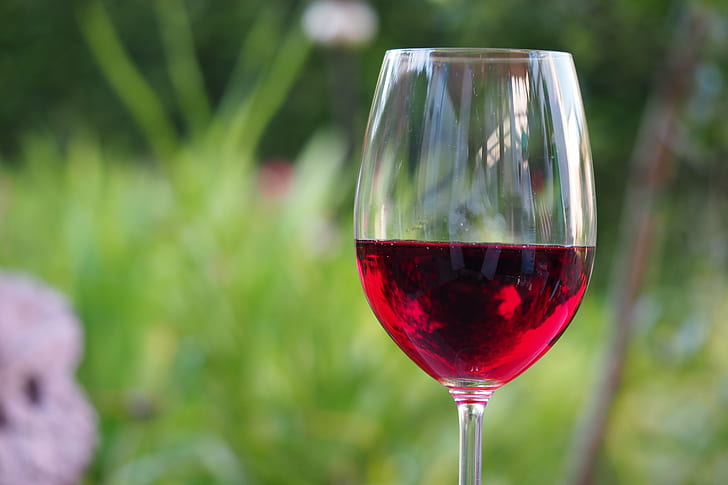
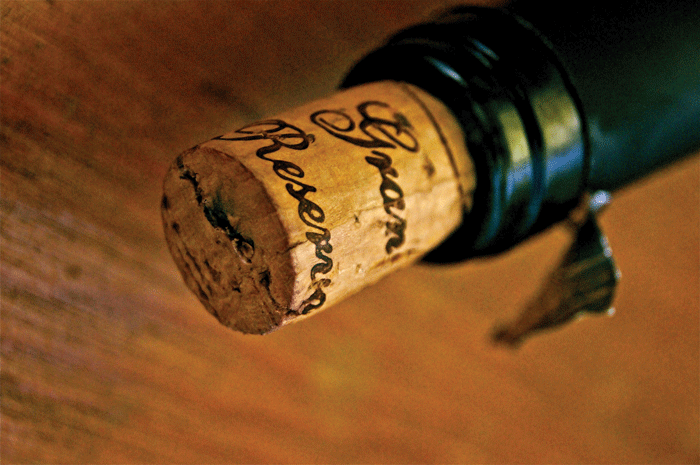
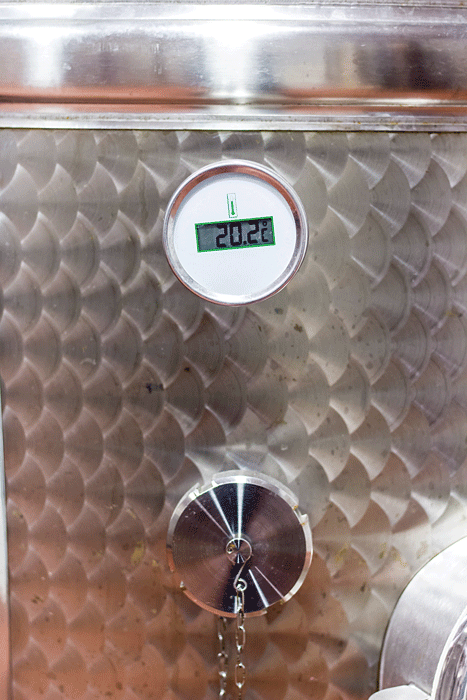
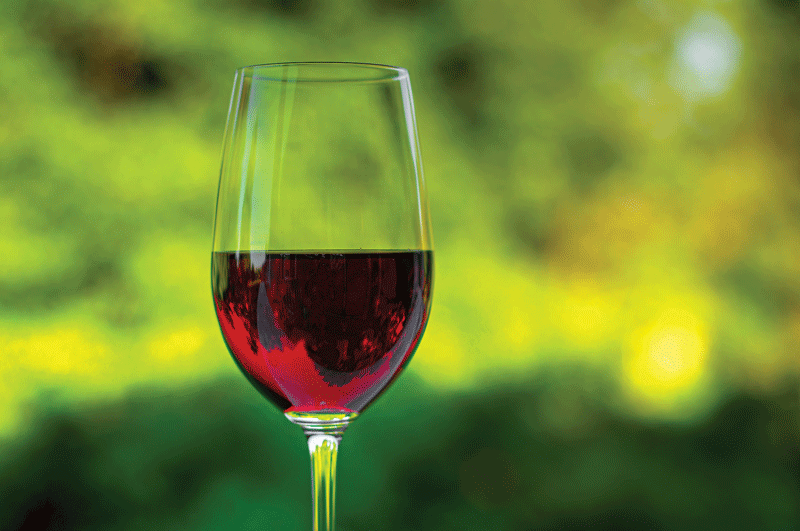
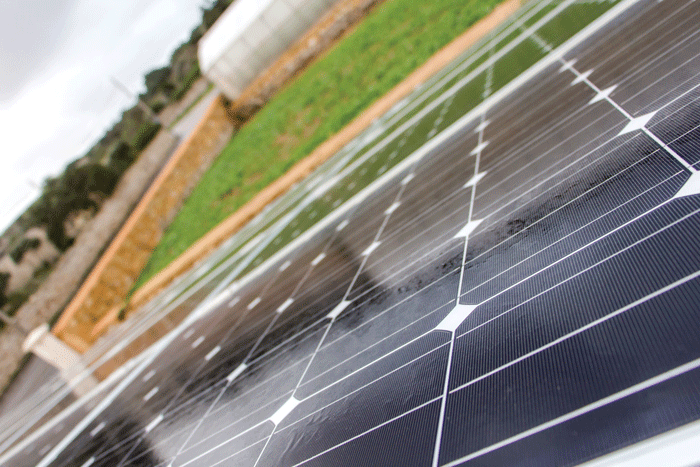



Comments are closed for this article!